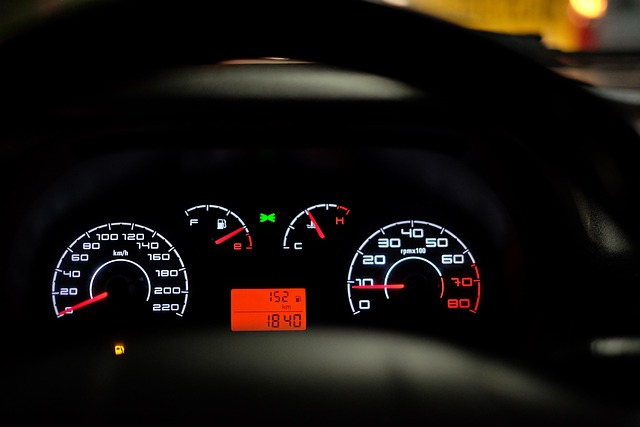Register Car California: DMV Steps & VIN Verification
Learn how to register your car in California with our step-by-step guide. California has specific requirements for car registration, which include providing proof of insurance, passing a smog test, an…….

Learn how to register your car in California with our step-by-step guide. California has specific requirements for car registration, which include providing proof of insurance, passing a smog test, and completing DMV vin verification. Gather all necessary documents, including your vehicle identification number (VIN), before visiting the DMV. We outline the process from start to finish, ensuring you’re prepared with accurate forms and fees.
- Understand California Car Registration Requirements
- Gather Necessary Documents for DMV Visit
- Perform VIN Verification: Steps and Importance
- Complete Application Forms Accurately
- Pay Registration Fees and Receive Your Plate
Understand California Car Registration Requirements

Before registering your car in California, it’s crucial to understand the state’s specific requirements. The California Department of Motor Vehicles (DMV) mandates that vehicles entering the state undergo a thorough inspection to ensure they meet safety and emission standards. This process involves a DMV vin verification, where the unique Vehicle Identification Number (VIN) is cross-checked against manufacturer records to validate authenticity and history.
A key aspect of this procedure is the vin inspection, which can be conducted at a local DMV office or through a mobile vin inspection service. Opting for a mobile vin verification offers convenience by bringing the inspection process directly to your location, saving you time and effort, especially if your vehicle has any hidden issues that might affect its registration.
Gather Necessary Documents for DMV Visit

Before heading to the DMV, make sure you have all the essential documents ready for a smooth car registration process. One crucial step in this journey is the DMV VIN verification, which ensures that your vehicle’s unique identification number (VIN) is accurate and matches the details on record. This can be done through a mobile vin inspection or by visiting a DMV office, allowing you to avoid potential delays later.
Gathering these documents early will save time: your driver’s license or ID, proof of insurance, vehicle title, and the registration fee payment. It’s also beneficial to have the car’s service history records handy, as some vin inspections might require this information for verification purposes.
Perform VIN Verification: Steps and Importance

Before registering your car in California, it’s crucial to ensure the vehicle’s identity through a process known as VIN (Vehicle Identification Number) verification. This step is a critical part of the registration process and can be completed through a DMV vin verification or a mobile vin inspection.
To perform this check, you’ll need to compare the VIN on your car’s title and registration documents with the one displayed on the vehicle’s frame. You can also use a mobile vin verifier app to streamline this process. These apps connect you to the manufacturer’s database, allowing for a quick cross-reference of the VIN details. This verification step is essential as it ensures that the car matches the documentation and helps prevent fraud or identity theft during registration.
Complete Application Forms Accurately

When registering your car in California, accuracy is key when filling out application forms. The Department of Motor Vehicles (DMV) requires comprehensive and precise information to process your registration smoothly. Start by ensuring all details, including your personal data, vehicle identification number (VIN), and ownership history, are correctly entered. An accurate VIN verification is crucial for a successful registration, so double-check the number’s validity before submitting.
A mobile vin verification service can be incredibly helpful in this process. These services allow you to quickly and easily validate your VIN, ensuring it matches the vehicle’s specifications. A simple vin inspection by a professional or even yourself with the right tools can save time and potential registration delays.
Pay Registration Fees and Receive Your Plate

After completing your vehicle’s inspection and ensuring all necessary repairs are made, it’s time to pay the registration fees. The California Department of Motor Vehicles (DMV) will verify the Vehicle Identification Number (VIN) during this process to confirm the vehicle’s details and ensure it meets safety standards. This step is crucial for a smooth registration experience. You can typically pay online or at your local DMV, where you’ll also receive your unique license plate.
The DMV might offer options for a mobile VIN inspection or use a mobile vin verifier to further streamline the process. These services allow you to get your vehicle’s details verified from the convenience of your location, saving time and effort. Once your fees are paid and the VIN verification is complete, you’ll be one step closer to officially registering your car in California.
Registering a car in California involves understanding specific requirements, gathering essential documents, completing crucial steps like VIN verification at the DMV, accurately filling out application forms, and paying registration fees. By diligently navigating these processes, you’ll not only ensure your vehicle’s legal status but also gain peace of mind knowing your car complies with state regulations. Remember, proper registration is key to a smooth driving experience in The Golden State.







